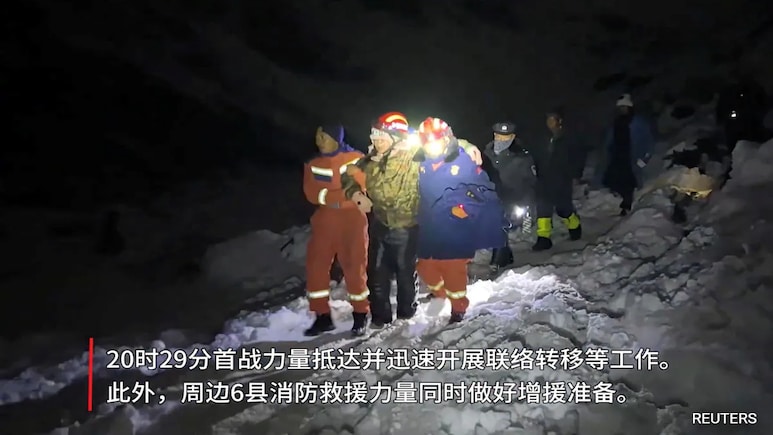
Rescuers on Tuesday safely evacuated all remaining trekkers near the east face of Mount Everest in Tibet, ending one of the largest search-and-rescue operations in the region.
The evacuation included hundreds of hikers, local guides, sherpas, and yak herders who had been stranded due to heavy snow and harsh weather, according to a report by Reuters.
The remote Karma Valley, leading to Everest's eastern Kangshung face, had hundreds of visitors taking advantage of China's eight-day National Day holiday. Over the weekend, unusually heavy snow and rainfall trapped almost 1,000 people in the Tingri region, one of the main routes to the world's tallest mountain.
Snow fell continuously on Saturday in the valley, which sits at an average altitude of 4,200 metres (13,800 ft). By Sunday, rescuers had guided about 350 hikers to safety. The remaining 200 or so trekkers were evacuated by Tuesday, bringing the total to 580 trekkers along with more than 300 guides, yak herders, and support staff, Xinhua reported.
❄️ Hundreds of trekkers trapped by a blizzard near Mount Everest's eastern face in Tibet have been rescued.
— Volcaholic 🌋 (@volcaholic1) October 6, 2025
Around 350 reached Qudang township, and contact has been made with over 200 others after heavy snow and rain hit the Himalayas.pic.twitter.com/9qiLNWKc56
Impact on climbers
The blizzard also disrupted plans for climbers guided by US-based Madison Mountaineering to summit Cho Oyu, an 8,188-metre (26,864-ft) peak on China's border with Nepal. Heavy snowfall affected hundreds of hikers in other parts of western China, including Xinjiang, Qinghai, and Gansu. At least one person died due to hypothermia and acute mountain sickness.
Authorities have temporarily closed the Everest region to the public, including Karma and Rongshar valleys, as well as Cho Oyu.
Hikers dig out using cooking pots
For 30-year-old Feng Holiday and her friends, the trek turned into a frightening ordeal. They had started from Youpa Village in Tibet's Shigatze prefecture on October 1 for a hike through the Karma Valley. Three days later, a rare October blizzard struck.
Feng said the storm intensified with heavy snow, thunder, and lightning. "By midnight, the snow was getting heavier, and my sleeping bag wasn't cutting it. There was condensation dripping inside, making it damp," she said, CNN reported.
With tents collapsing under the snow, Feng and her teammates had to dig themselves out using only cooking pots. "So, I had to go out and shovel snow, only to find my teammates were buried too. We all had to dig together, which was tough since we had no tools, just used our cooking pots!"
More than three feet (95 cm) of snow fell at the summit of Mount Everest on Saturday, nearly three times the average weekly snowfall for this time of year.
Safe descent after the blizzard
After a "scary" night, Feng and her friends began hiking down the mountain on Sunday morning, leaving behind tents and heavy gear for lighter packs. By about 6:30 pm local time, they reached the foot of the mountain, where government officials and locals were waiting.
Videos shared on the Chinese social media platform Xiaohongshu showed hikers clearing snow off buried tents in blustery whiteout conditions.
(With inputs from agencies)
Track Latest News Live on NDTV.com and get news updates from India and around the world

